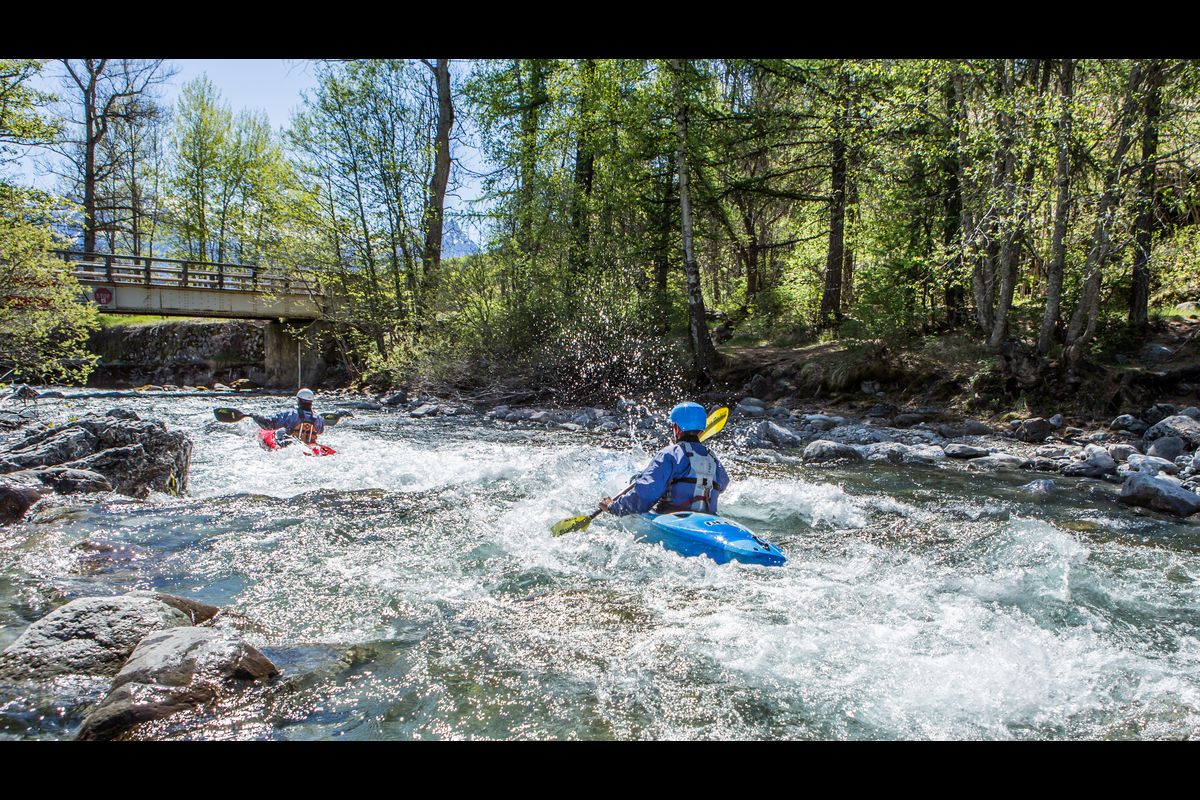
Onde P2 : from the Places bridge to the Gérendoine bridge (Vallouise)
Description
Relatively isolated, the itinerary is borded by an abundant vegetation as well as a trail on the right bank. Signs indicate where to embark and where to disembark, as well warn against the deadly risk of the Vallouise hydroelectric dam.
From the Places bridge, the torrent alternates between narrow sections with rapids, and wider and calmer sections. It narrows down consequently under the Fontaines bridge, before making turns until reaching the Gérendoine bridge.
Return : On the right bank upstream from the Gérondoine bridge, disembark on the grassy slopes that take you bak to the trail. This trail takes you back to a minute park space on the road back to the Places bridge.
- Towns crossed : Vallouise-Pelvoux
Gear
- Helmet and life jacket are mandatory
- Inflatable kayaks are not suitable and strongly advised against
Recommandations
- The descent is mandatory at the Gerendoine bridge, as there is a dam downstream
- Careful with the water levels when approaching the dam
- Canyoning is authorized between 8:30 and 17:00
- Careful with floods after a storm
- Careful with logjams, especially at the beginning of the season
- Please take your trash with you
Attention : Experience is required in order to navigate these rivers without professional supervision. This information is provided for general guidance. Checking weather reports, water levels, flow rates and conditions before embarking is under your responsability. The tourism office and the national park will not be held responsable in case of an accident.
If you have doubts, please ask a professional. Kayak schools, instructors and renting shops of the valley are here to help you.
Mountain Rescue : dial 112
Weather report
Water levels at l’Argentière : https://www.rdbrmc.com/hydroreel2/station.php?codestation=1125
15 points of interest
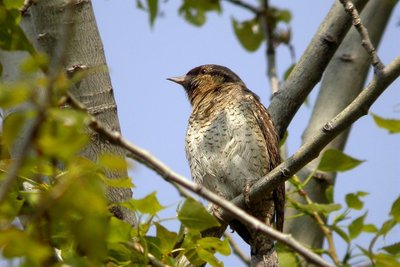
Torcol fourmilier - Damien Combrisson - Parc national des Écrins  Fauna
FaunaThe northern wryneck
The old trees in the orchard are home to the northern wryneck. It has a loud song, rather like that of the green woodpecker, only slower. This bird owes its name to the extreme way it extends and twists its neck when it feels threatened. Its French name torcol fourmilier is a reference to the fact that it feeds on ants (fourmils in French). Difficult to spot because its plumage merges into the colour of the tree trunks, it gives its presence away by its song when it returns from its migration.
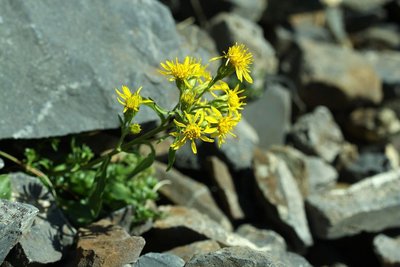
Petite verge d'or - Cédric Dentan - Parc national des Écrins  Flora
FloraThe great goldenrod
In damp spots on the edge of the track, swathes of tall plants grow. It forms great plumes of tiny yellow plants. The great goldenrod, still known as the tête d'or or "head of gold" is a plant native to North America and introduced into Europe in the eighteenth century as an ornamental. Since then, it has colonised a large are of Europe and in some places it even competes with the local flora.
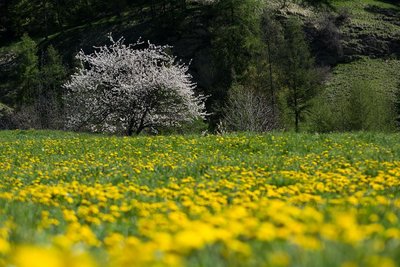
Merisier en fleur - Mireille Coulon - Parc national des Écrins  Flora
FloraThe bird cherry
Here where the soil is sufficiently cool, a small tree with oval, pointed leaves grows on the side of the track. In May, when it starts to come into leaf, the bird cherry, a cousin of the familiar ordinary cherry tree, produces numerous clusters of highly scented white flowers. These later develop into in loose bunches of small dark cherries which are only just edible. It was called the "putiet" or stinking wood, not because of its scented flowers of course, but its bark.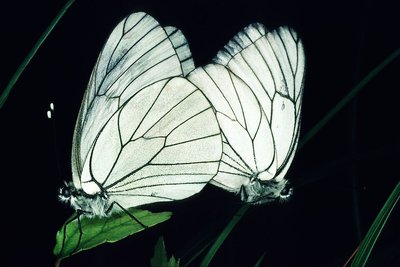
Le gazé - Jean-Marie Gourreau - Parc national des Écrins  Fauna
FaunaThe black-veined white
What could be better than a great pile of manure, its nutrient-rich liquid seeping onto the road? This windfall attracts clouds of butterflies which settle in their dozens on the road, risking their lives. It is the ideal spot (well, sort of!) for admiring them because they are so preoccupied with sipping this nectar. One of them is easy to identify: the black-veined white with very distinctive black veining. This butterfly is very common, so it can be spotted very frequently, not only near piles of manure!
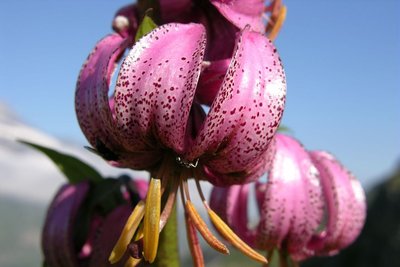
Lis martagon - Thierry Maillet - Parc national des Écrins  Flora
FloraThe martagon lily
In the forest, the martagon lily is a common sight. This superb plant has large hanging flowers with curved-back petals, which are pink speckled with purple and exposed orangey stamens. Its leaves are elongated and whorled. It grows in meadows and cool woods. Although common here, it is rare in many French regions. In fact, picking it is prohibited or regulated.
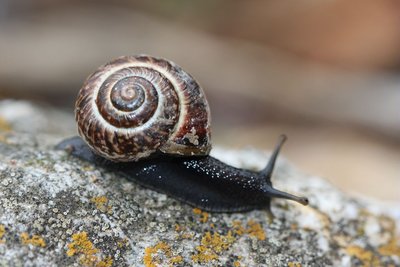
Hélice des Alpes - Damien Combrisson - Parc national des Écrins  Fauna
FaunaThe Alpine copse snail
On the damp banks of the stream, hidden in the grass, is a snail with a beautiful golden brown shell speckled with brown, decorated with a dark spiral stripe. It has a black body. The alpine copse snail is relatively rare and, as its name suggests, it is found in the Alps. It is a sub-species of the ordinary copse snail, which is present across Europe.
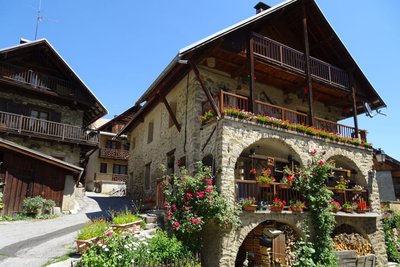
Le Villard - Office de tourisme Pays des Écrins  Architecture
ArchitectureLe Villard in Vallouise
Lying in the valley of the Onde, the hamlet of Le Villard is justifiably proud of its beautiful houses with arcaded balconies, of the same type as those of Vallouise. It is a pretty, flower-filled hamlet. It still receives a few hours of sunshine in the winter, which is not the case further along the Onde valley. It stands in a position sheltered from avalanches which are severe in this valley.
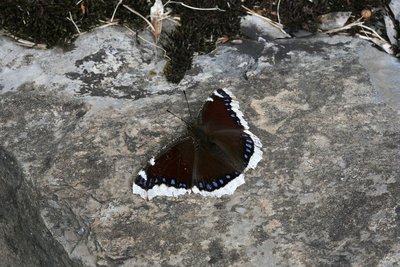
Le morio - Bernard Nicollet - Parc national des Écrins  Fauna
FaunaThe morio
With wings edged with creamy white and sporting a string of little blue dots, a large butterfly takes flight from the path as the walker approaches. This is the morio. Its common French name is manteau royal, or royal cloak (although her cloak is not edged with ermine!) It lives near willow and beech trees because it loves the sap that flows from wounds in these trees. It is one of the few butterflies to hibernate as an adult.
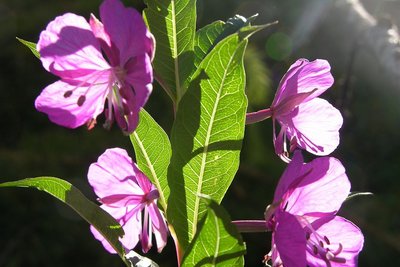
Epilobe en épis - Thierry Maillet - Parc national des Écrins  Flora
FloraThe rosebay willowherb
The rosebay willowherb is a tall, upright plant with elongated leaves. Its numerous purple-pink flowers are arranged in loose spikes at the top of the stem. It forms large clumps, which produce a beautiful display when in bloom. It is a pioneer plant and favours road embankments and disturbed ground. In late summer, its very numerous seeds, each with a little plume, float away en masse glowing in the advancing twilight…
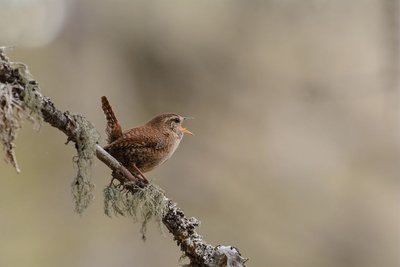
Mireille Coulon - Parc national des Écrins  Fauna
FaunaThe Eurasian wren
A piercing song, long and flowing with numerous trills, bursts from the forest. What a pair of lungs! This powerful song is that of a tiny bird with a plump body and a short tail, which is often raised: the Eurasian wren. It lives in cool forests with dense undergrowth or in bushes on the water's edge. It builds a spherical nest, often against a rock or old wall, hence its French name troglodyte.

Le rougegorge - Damien Combrisson - Parc national des Écrins  Fauna
FaunaThe robin
The robin is a common sight around bird feeders in winter. But he is primarily a forest bird, building his nest close to the ground in a cavity in a rock or tree. His song is a gentle chatter, rising to high notes. The robin "redbreast" is a relatively solitary and territorial bird, and he defends his territory by displaying his red (actually, orange!) breast as he sings.
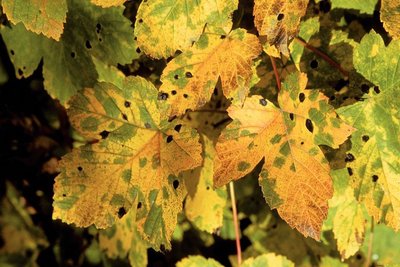
L'érable sycomore - Bernard Nicollet - Parc national des Écrins  Flora
FloraThe sycamore
The sycamore is a beautiful tree. Its leaves have five rather pointed lobes, similar to those of the plane tree. It cannot tolerate drought, so it grows in this region in relatively cool deciduous forests. Its twin fruits, equipped with wings, twist as they fal: the «helicopters» that children love. In autumn, its leaves turn golden yellow creating a delightful sight.
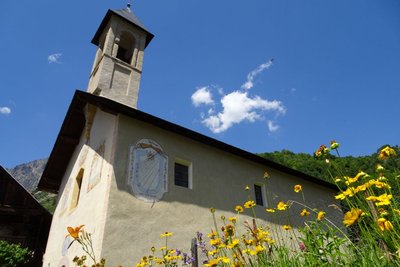
L'église Saint Sébastien - Office de tourisme Pays des Écrins  Vernacular heritage
Vernacular heritageThe church of Saint-Sébastien
A listed Historical Monument, this church has two frescoes on its facade depicting the Virgin Mary and Saint Sebastian. The church is also known for its two sun dials dating from 1718, made by Giovanni Francesco Zarbula.
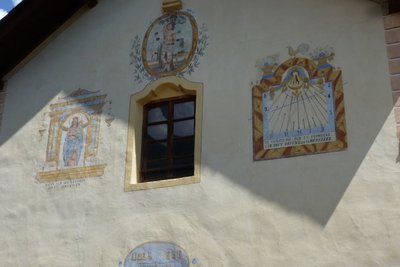
Oeuvres de Giovanni Francesco Zarbula sur l'église Saint Sébastien - Office de tourisme Pays des Écrins  History
HistoryGiovanni Francesco Zarbula
Between 1833 and 1870, Giovanni Francesco Zarbula made some forty sundials in the Hautes-Alpes. Here, one of the sundials depicts a cockerel, large vases of flowers, curtains and masonry tools. On the other sundial, we see crows dropping flowers and a rare bird. Both sundials show a motto.
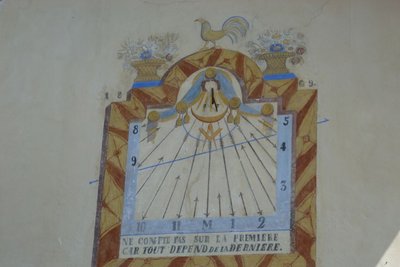
Cadran solaire sur l'église Saint Sébastien - Office de tourisme Pays des Écrins  Vernacular heritage
Vernacular heritageThe sun dials
The sun dial is an eighteenth century tradition that is widespread in the Southern Alps, where the sun is constantly present. Artisan dial makers were responsible for these dials, which adorn and embellish the fronts of houses, religious buildings and monuments. They are works of art, but can also be inscribed with philosophical sayings.
